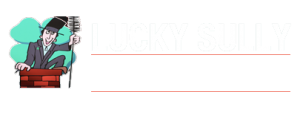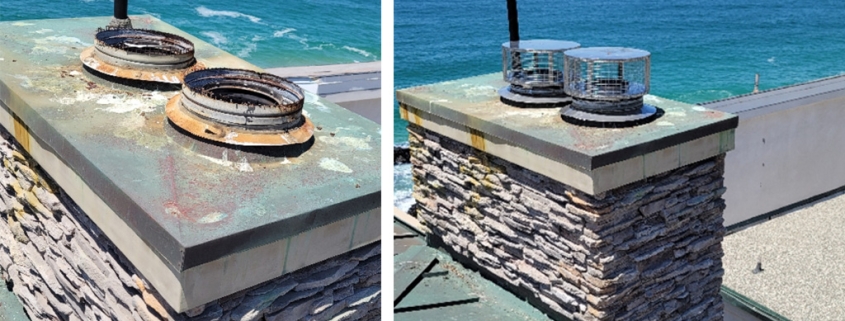Rain, Mold, and Damage: The Real Cost of Ignoring Chimney Leaks
Chimney leaks might seem like a minor issue, but their consequences can spiral into a series of expensive, disruptive, and dangerous problems. If you’re unsure about the real cost of ignoring chimney leaks, it’s time to rethink your approach. Many homeowners tend to overlook these leaks until the damage becomes severe. However, leaving them unaddressed can lead to expensive repairs, mold growth, water damage, fire hazards, and compromised structural integrity.
At Lucky Sully Chimney Sweep, we understand the importance of regular maintenance and prompt repairs when it comes to chimney leaks. This article will walk you through the real risks involved with ignoring chimney leaks, from costly water damage to potential health hazards, so you can make informed decisions about your home’s safety and value.
Understanding Chimney Leaks: What Are They and How Do They Happen?
A chimney leak is simply when water infiltrates your chimney system, either through cracks, damaged components, or poor construction. When left untreated, chimney leaks can cause structural damage, mold growth, and even compromise your chimney’s safety and function.
Cracked Chimney Crown
The chimney crown is a protective barrier at the top of your chimney designed to keep water and debris out. If this crown cracks, water can easily seep inside. Once this happens, water can get trapped inside the chimney, causing extensive internal damage and eventually leading to mold growth and water stains. Cracks can result from aging or harsh weather, particularly freezing temperatures that cause the crown to expand and contract.
Damaged Chimney Cap
The chimney cap is a vital component that protects your chimney from water, animals, and debris. Without a properly functioning cap, rainwater can directly enter the chimney, damaging the internal flue and causing rust or corrosion. Furthermore, the lack of a cap invites pests, leaves, and twigs into your chimney, leading to clogs, smoke buildup, and potential fires.
Flashing Issues
Flashing is a metal material used to seal the joint between the roof and chimney. When flashing becomes loose, rusted, or improperly installed, it opens up the possibility for water leaks. Without proper sealing, water flows into the seams, causing leaks that may go unnoticed for a while but can lead to significant water damage over time.
Aging Mortar and Masonry
The mortar and masonry used in your chimney system are prone to wear over time. The constant exposure to the elements causes these materials to deteriorate, which can create gaps that allow water to enter. When these cracks form, moisture can seep into your chimney’s structure, leading to extensive water damage, increased maintenance costs, and decreased functionality.
The Hidden Dangers of Mold Caused by Chimney Leaks
When water leaks into your chimney, it doesn’t just affect the structure of the chimney itself; it can also infiltrate other parts of your home. One of the most concerning issues caused by chimney leaks is mold. Mold thrives in damp, dark environments—precisely the conditions created by a leaky chimney.
Health Risks from Mold Exposure
Mold growth due to chimney leaks can have serious health consequences, especially for people with allergies, asthma, or weakened immune systems. Mold spores can spread throughout your home, affecting the air quality and leading to respiratory problems, coughing, skin irritation, sinus congestion, and other allergic reactions. Some types of mold, such as black mold, are even toxic and pose significant health risks. In severe cases, mold remediation may be necessary, adding substantial costs to your repair bill.
Structural Damage Due to Mold
Not only does mold affect the health of your household, but it can also wreak havoc on your home’s structural integrity. Mold can cause wood to rot, which weakens floorboards, beams, and walls. It can even damage drywall, insulation, and ceilings. If left unchecked, this mold-related damage could lead to the need for extensive repairs, including replacing structural components like drywall, insulation, and even sections of the chimney itself.
The Importance of Timely Repairs
The quicker you address a chimney leak, the less likely you are to face mold growth. If you notice any signs of water infiltration or mold growth in your home, it’s essential to act immediately. Leaky Chimney Repair services can help prevent the spread of mold, ultimately saving you from expensive remediation costs and health risks.
Water Damage: The Domino Effect of a Leaky Chimney
Water damage is one of the most immediate consequences of a leaking chimney, and the longer you leave the issue unaddressed, the more extensive and costly the repairs will become.
Ceiling and Wall Stains
Water that seeps through your chimney can affect the interior of your home, often leading to unsightly stains on your ceilings and walls. These stains are typically yellowish or brown, indicating that water has been entering the area for some time. If left unchecked, this moisture will continue to spread, resulting in even more stains, peeling paint, or wallpaper damage.
Weakened Structural Integrity
As water continues to infiltrate your chimney and home, the moisture will begin to affect your home’s structural elements. Wooden beams and flooring can absorb moisture, leading to rot and decay. Metal parts like nails, screws, and flashing can corrode, weakening the overall structure. Water damage can also compromise the integrity of your chimney, causing bricks to loosen and mortar to weaken. Without proper Leaky Chimney Repair, these issues will only worsen over time.
Higher Repair Costs
What may start as a small issue—such as a crack in the mortar or damaged flashing—can lead to much larger and more expensive repairs if left untreated. Water damage can affect not only the chimney but also other parts of your home, such as the roof, attic, and walls. The cost of repairing extensive water damage can be astronomical, often requiring extensive restoration work and the replacement of key structural components.
Chimney Leaks and Fire Hazards: The Unseen Risk
A leaking chimney doesn’t only affect your home’s structure and health—ignoring leaks can also compromise your safety. Water leaks can damage the internal components of your chimney, leading to increased fire hazards.
Creosote Buildup
Creosote is a flammable byproduct of wood burning that accumulates inside the chimney flue. When water enters the chimney, it can cause the creosote to become wet and sticky. Wet creosote is more likely to ignite, potentially leading to a chimney fire. These fires can cause significant damage to the chimney, the roof, and the rest of the home.
Decreased Chimney Efficiency
A damaged or leaking chimney won’t function as efficiently as it should. If water is present, it can cause the chimney to become obstructed, preventing smoke and gases from venting properly. This can lead to a dangerous buildup of carbon monoxide in your home—a serious health risk. Poor chimney performance can also decrease the efficiency of your heating system, making it harder to maintain comfortable temperatures.
How to Prevent Chimney Leaks and Their Costs
Preventing chimney leaks is far less expensive than dealing with the damage they cause. Regular maintenance and timely repairs can save you significant amounts of money.
Chimney Inspections
Schedule regular chimney inspections with professionals like Lucky Sully Chimney Sweep to ensure that your chimney is functioning correctly. A thorough inspection will identify potential issues, such as cracks, missing mortar, and damaged caps, before they escalate into expensive repairs.
Routine Maintenance
Investing in regular cleaning and maintenance will keep your chimney in top condition. Cleaning out creosote buildup, repairing damaged flashing, and replacing old chimney caps can go a long way in preventing water from entering your chimney.
Waterproofing
Consider waterproofing your chimney to further prevent water damage. Waterproofing products can protect your masonry from moisture while still allowing the chimney to breathe. This step can significantly reduce the risk of leaks and the associated damage.
Conclusion: The Importance of Timely Chimney Leak Repairs
Ignoring chimney leaks can cost you far more than just the initial repair. From mold growth to severe structural damage and fire hazards, the real cost of ignoring chimney leaks is far-reaching. Protect your home and family by addressing chimney leaks as soon as they are noticed.
At Lucky Sully Chimney Sweep, we specialize in Leaky Chimney Repair services that can prevent further damage, ensuring your home remains safe, dry, and efficient. Don’t wait for the problem to escalate—get your chimney inspected and repaired today.
FAQs
What are the signs of a chimney leak?
Look for water stains on the ceiling or walls, a musty odor, and mold growth. You may also notice cracks in the chimney crown or flashing.
How can chimney leaks cause health problems?
Chimney leaks can lead to mold growth, which can trigger allergies, asthma, and respiratory problems.
How do I prevent chimney leaks?
Regular chimney inspections, cleaning, and maintenance are key to preventing leaks. Installing a proper chimney cap and repairing damaged flashing also helps.
What are the dangers of a chimney fire caused by a leak?
A chimney fire can cause extensive damage to your home, including structural damage and the risk of smoke inhalation or carbon monoxide poisoning.
How much does it cost to repair a leaky chimney?
The cost of repairs varies depending on the extent of the damage. Minor repairs like flashing replacement are affordable, while extensive water damage or mold remediation can be expensive.









